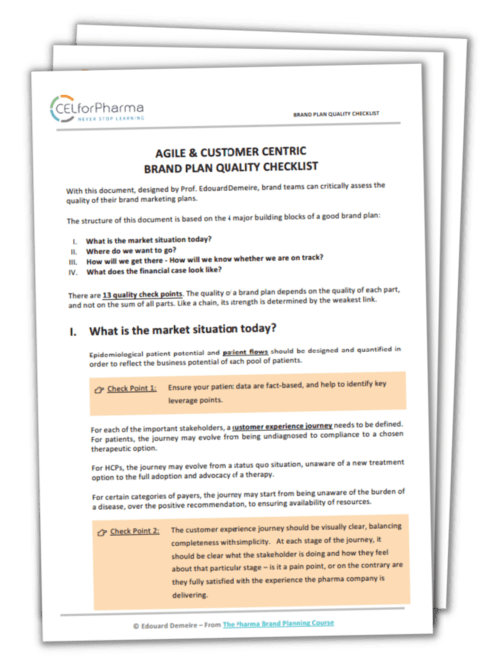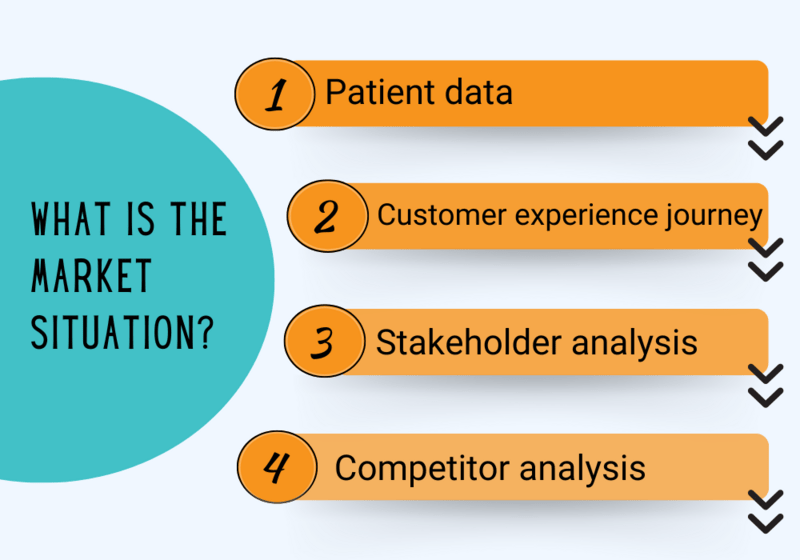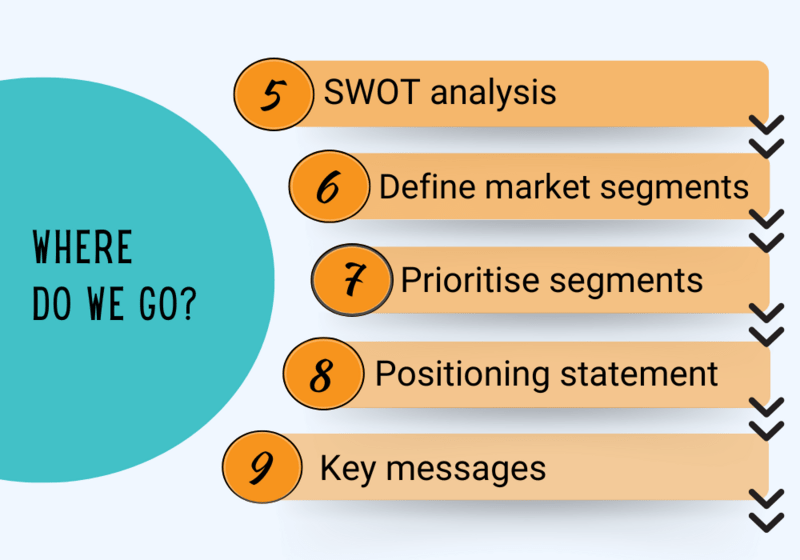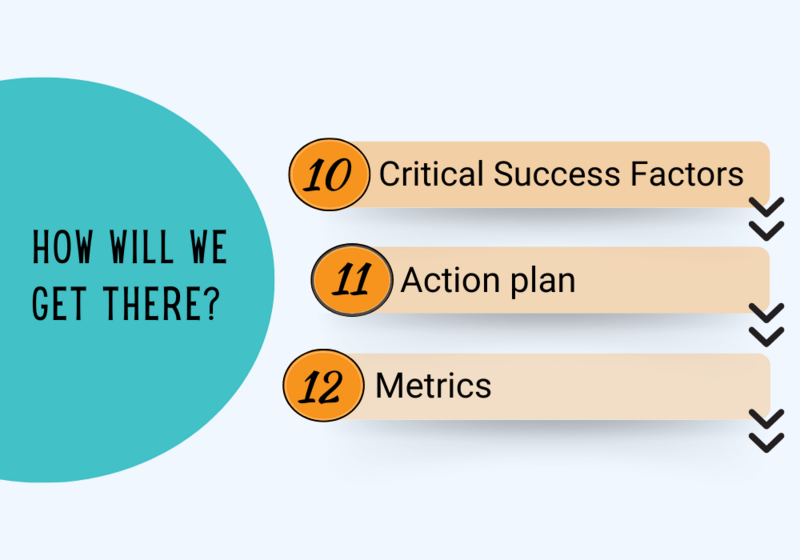A successful pharma brand plan is more than just a document—it is a roadmap for achieving strategic objectives while staying agile and customer-focused.
The quality of a brand marketing plan relies on the robustness of each part. Its strength is determined by the weakest step in the brand planning process.
Edouard Demeire, Strategic Pharma Marketing expert and trainer of CELforPharma's 2-day The Pharma Brand Planning Course has developed the “Agile & Customer-Centric Brand Plan Quality Checklist”.

The checklist is structured around 4 major building blocks, guiding you to critically evaluate and improve your plan in 13 steps:
🔍 1. Understanding the Market Situation Today
The strength of your plan begins with a clear understanding of the market. This building block focuses on gathering fact-based insights and mapping the journeys of key stakeholders, such as patients, healthcare providers (HCPs), and payers.

Step 1: Ensure patient data is accurate and identifies key leverage points.
Step 2: Define stakeholder experience journeys that are visually clear and actionable.
Step 3: Quantify stakeholders and understand their behaviours, beliefs, and needs.
Step 4: Develop a competitive intelligence (CI) approach focused on both competing product and company level for all competitors.
🎯 2. Defining Where You Want to Go
Set a clear direction with strategic tools that prioritise actions and resources effectively.

Step 5: Use a concise, insightful SWOT analysis to highlight critical success factors.
Step 6: Define market segments based on potential, adoption stages, and interaction preferences.
Step 7: Prioritise segments using fact-based criteria to focus efforts where they matter most.
Step 8: Craft a powerful positioning statement that differentiates your brand and resonates with target audiences.
Step 9: Translate positioning into impactful and sustainable key messages.
📊 3. Determining How to Get There and Measuring Progress
Execution and measurement are key to success. This building block ensures your actions are aligned with critical success factors and monitored effectively.

Step 10: Define clear critical success factors (CSFs) that reflect desired stakeholder beliefs and behaviours.
Step 11: Align actions to address stakeholder beliefs and behaviours, unlocking key CSFs.
Step 12: Use leading indicators to measure progress, focusing on stakeholder belief and behaviour changes.
💰 4. Building the Financial Case
Finally, a strong financial foundation ensures your plan is both strategic and adaptable.

Step 13: Develop agile budget scenarios based on investment requirements and sales potential for strategic options.
